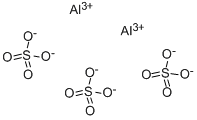Lithopone
- CAS NO.:1345-05-7
- Empirical Formula: BaO5S2Zn2
- Molecular Weight: 412.23
- MDL number: MFCD00467106
- EINECS: 215-715-5
- SAFETY DATA SHEET (SDS)
- Update Date: 2024-12-18 14:15:32

What is Lithopone?
Chemical properties
Lithopone is a white powder that is insoluble in water, but soluble in acids. It has high resistance to hydrochloric acid and silver ions.
The Uses of Lithopone
Lithopone is mainly used in coating materials with relatively high pigment concentrations. Examples are primers, plastic masses, putties and fillers, artists’ colors, and emulsion paints. An important property of lithopone is its low binder requirement, giving paint products with good flow and application properties. It is suitable for almost all binder media, and has good wetting and dispersing properties. With optimum feed composition, good dispersion can be achieved simply by the action of a dissolver. It can be economically advantageous to use lithopone in combination with TiO2 pigments; the good hiding power of the TiO2 pigments is combined with the economic and technical advantages of lithopone. Due to the strong shift of the absorption band towards the blue, lithopone is especially useful as a white pigment for UV-cured paint systems. Zinc compounds have fungicidal and algicidal effects, and inclusion of lithopone or Sachtolith in paint formulations for exterior use therefore helps prevent the growth of algae or fungi.
The material advantages of lithopone are used in plastics (e.g., good lightfastness and clear bluish-white shade). The product also imparts very good extruding properties to the plastic resulting in high throughput rates and economic extruder operation. In fire-resistant systems, ca. 50% of the flame retardant antimony trioxide can be replaced by nontoxic lithopone without any adverse effect.
The Uses of Lithopone
In water and oil paints to provide thixotropy, improve gloss and flow.
The Uses of Lithopone
Lithopone is a mixed zinc sulfide-barium sulfate pigment available in two types; one containing 30 percent zinc sulfide and one containing 60 percent zinc sulfide. Coprecipitation is achieved by reacting an aqueous solution of zinc sulfate with barium sulfide. The barium sulfide solution is prepared by reducing barite ore (BaSO4) with carbon.
What are the applications of Application
Lithopone is used as a pigment in paints, plastics, and printing inks. The particle size of it can be reduced through the use of polyvinyl alcohol (PVA) or sodium carbonate. PVA reduces particle size by absorbing the liquid and forming a gel-like substance around the particles. Sodium carbonate reduces particle size by forming a protective layer on the surface of the particles, which prevents them from clumping together. Lithopone also has analytical chemistry applications because it absorbs radiation well and can be used for identification purposes.
Properties of Lithopone
| Density | 4.136~4.39 |
| CAS DataBase Reference | 1345-05-7(CAS DataBase Reference) |
| EPA Substance Registry System | C.I. Pigment White 5 (1345-05-7) |
Safety information for Lithopone
Computed Descriptors for Lithopone
New Products
(S)-3-Aminobutanenitrile hydrochloride 4-Methylphenylacetic acid N-Boc-D-alaninol N-BOC-D/L-ALANINOL Tert-butyl bis(2-chloroethyl)carbamate 3-Morpholino-1-(4-nitrophenyl)-5,6-dihydropyridin- 2(1H)-one Furan-2,5-Dicarboxylic Acid Tropic acid 1-Bromo-3,5-Di-Tert-Butylbenzene S-2-CHLORO PROPIONIC ACID ETHYL ISOCYANOACETATE 2-Bromo-1,3-Bis(Dimethylamino)Trimethinium Hexafluorophosphate 4-IODO BENZOIC ACID 3-NITRO-2-METHYL ANILINE 1-(2,4-DICHLOROPHENYL) ETHANAMINE (2-Hydroxyphenyl)acetonitrile 4-Bromopyrazole 2-(Cyanocyclohexyl)acetic acid 4-methoxy-3,5-dinitropyridine 1-(4-(aminomethyl)benzyl)urea hydrochloride 2-aminopropyl benzoate hydrochloride diethyl 2-(2-((tertbutoxycarbonyl)amino) ethyl)malonate tert-butyl 4- (ureidomethyl)benzylcarbamate Ethyl-2-chloro((4-methoxyphenyl)hydrazono)acetateRelated products of tetrahydrofuran








You may like
-
 Lithopone CASView Details
Lithopone CASView Details -
 2033-24-1 98%View Details
2033-24-1 98%View Details
2033-24-1 -
 1975-50-4 98%View Details
1975-50-4 98%View Details
1975-50-4 -
 2-HYDROXY BENZYL ALCOHOL 98%View Details
2-HYDROXY BENZYL ALCOHOL 98%View Details
90-01-7 -
 2-Chloro-1,3-Bis(Dimethylamino)Trimethinium Hexafluorophosphate 221615-75-4 98%View Details
2-Chloro-1,3-Bis(Dimethylamino)Trimethinium Hexafluorophosphate 221615-75-4 98%View Details
221615-75-4 -
 61397-56-6 CIS BROMO BENZOATE 98%View Details
61397-56-6 CIS BROMO BENZOATE 98%View Details
61397-56-6 -
 14714-50-2 (2-Hydroxyphenyl)acetonitrile 98+View Details
14714-50-2 (2-Hydroxyphenyl)acetonitrile 98+View Details
14714-50-2 -
 118753-70-1 98+View Details
118753-70-1 98+View Details
118753-70-1